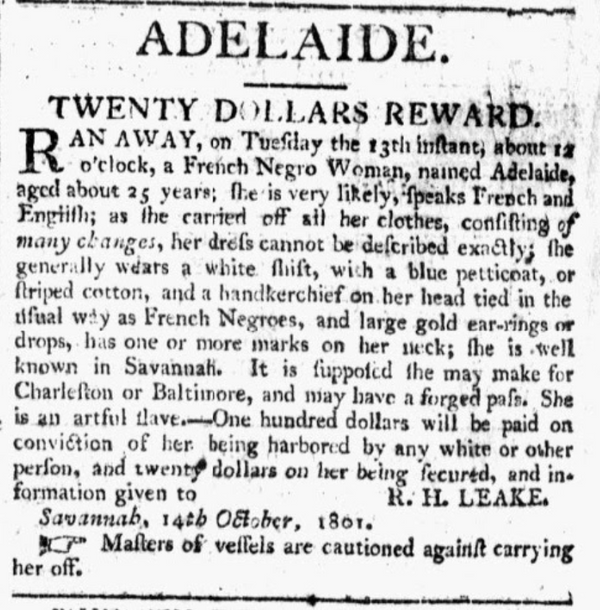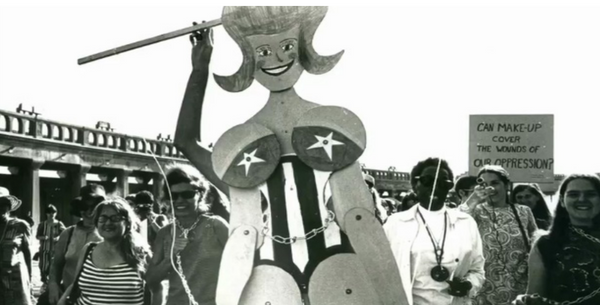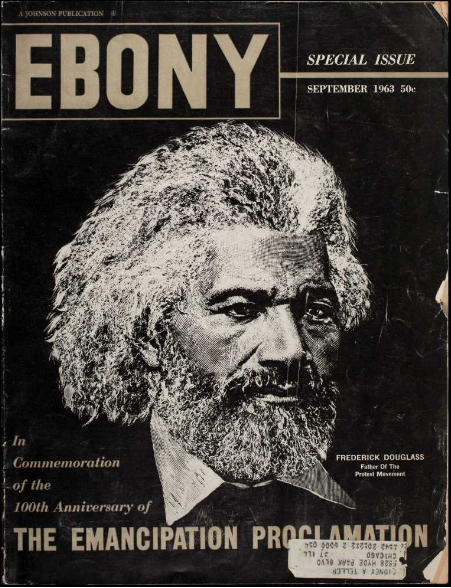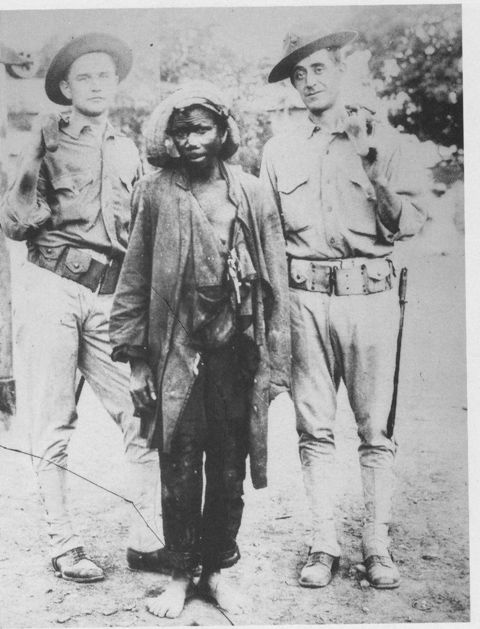By Chasia Jeffries
Edited by Iman Iftikhar '23 and Endure McTier '22
Introduction
African people were some of the first occupants of the land we currently understand to be the country of Spain; they even occupied and ruled the country for centuries. However, when one looks at the current condition of the country, this historical past is hard to believe. It is hidden in horseshoe arches of now-Cathedrals and in the Arabic names of some Spanish villages, like Albufera in Valencia. In 2017, one of the Spanish national newspapers, “El País” estimated that the Black population in Spain was around one million people, though there was no official census or process for determining definite statistics.1 According to the Continuous Municipal Register which gathers padrones, the official population of Spain, not just Spanish citizens, in 2017 was 46,539,026 people,2 meaning that Black people made up about 2% of the entire Spanish population. Despite a prevalent role in the history of Spain, the presence of Black people in Spain today is sparse and discussion of their race and ethnicity is usually in the context of immigration. This is the result of a deliberate reconstruction of Spanish narratives and history, one that erased Black bodies in an anti-Black push toward the Westernization of the Iberian Peninsula.
According to the United Nations (UN) 2017 International Migrant Stock Report, Spain received 5,947,106 immigrants in the year 2017. Of this total, the country of origin with the highest number of immigrants was Morocco, with 706,520 immigrants to Spain. This only accounts for 11% of the immigrants to Spain, however, which is surprising given media and political discourse in the country in regards to immigration, which is heavily anti-Morrocan. While Morocco produces the highest number of immigrants, it is followed closely by Romania; then other European Union (EU) countries, like Italy, the UK, Germany, and France, where free movement to Spain is a right; and Latin American countries like Colombia and Ecuador, where immigrants are offered a faster path to citizenship in Spain.3 Other predominantly African, Arab, and Muslim countries are barely comparable in the number of immigrants to Spain produced.4 If immigration was truly a problem in Spain, and discourse around issues of space, employment, and culture were valid, efforts would be focused on blocking immigration from all of the previously mentioned countries producing high numbers of immigrants, which is not the reality.
Instead, a significant amount of media attention and discussion of immigration reform in Spain is focused on Black presenting bodies, mainly Morrocan, Muslim, African, and/or Arabic immigrants, many of whom are refugees risking their lives to escape dangerous situations in their home countries. These immigrants, while ethnically, religiously, and culturally distinct, are viewed homogeneously as Black by Western European society, regardless of how they independently identify. Isolina Ballestero describes this phenomena:
The migratory component, naturally heterogeneous, is homogenized by the “native” in categories constitutive of the racist stereotype. Thus, the European citizen in general and the Spanish in particular is unwilling to make an effort to distinguish between Morrocans, Algerians, and Turks (“moros”), Indians or Pakistanis (“pakis”), South Americans, Central Americans, or Caribbeans (“sudacas”), Senegalese, Gambians, Guineans, Cubans, or Dominicans (“negros”), Chinese, Japanese, or Vietnamese (“chinos”).5
This paper focuses on the treatment of bodies perceived as Black in society and does not attempt to negate the importance of cultural distinctions of race, ethnicity, and religion or the role they play in the current immigration crisis. It instead aims to interrogate the connection between current and historical perceptions of Blackness and the reality currently faced by Morrocan, Muslim, African, and/or Arabic individuals in Spain. It is for this reason that this paper will refer to collective experiences of Muslim, African, and/or Arabic individuals in Spain as Black and the violence aimed at them as anti-Blackness.
This definition of Blackness allows for answers to social discrepancies like the demonization and criminalization of Morrocan immigrants in Spain, while non-Black immigrants from the EU and Latin America are easily integrated and even welcomed to the country. Further, once regularized and/or naturalized, Black people in Spain often experience discrimination at higher rates than their white presenting counterparts.6 The constructed discrepancy in the portrayal and treatment of Black immigrants to their reality illustrates that Spain’s past dealings with racism and anti-Blackness are still prevalent today, a phenomena referred to as “benign racism”: which is defined as:
The residual racism that still exists when whites make conscious efforts to combat racism… [and] small-scale “benevolent” interactions (that) repeat the cruder pattern of large-scale racisms, but in a muted way that is difficult to notice until the effects of this many small-scale discriminations have been totaled up. This “subtle,” “diffuse,” “benign” neo-racism appropriates the traditionally anti-racist discourse and appears to be a defender of equality and a detractor for discrimination, but finding excuses that are not based on race but rather, for example, on the immigrant’s illegal status.7
In believing they have progressed beyond the historic atrocities of racism, Spain attempts to obscure their history of anti-Blackness and a global history of imperialism, colonialism, and racism is not only part of a deliberately erased Spanish history, but is also prevalent in Spain today as can be seen in their treatment of and failure to integrate Black immigrants into Spanish society.
Pre-Colonial & Colonial Blackness in Spain
In prehistoric times, Iberians from Africa and Celts from Central Europe interacted on the land we currently understand to be Spain and these interactions produced historic Spanish identity.8 When the Romans arrived in Spain to “trade,” they found a society “well advanced, economically and culturally, and able, though not without some severe struggles, to adapt itself to Roman urban patterns,” 9 at which point the Westernization of Spain began. Spain became white or European through the destruction of culture and peoples and through the mass colonization of a stable society.10
One way this was done was through the Romans publicizing specific inscriptions or documents that supported the desired narrative of the colonization of the Iberian Peninsula while burying or destroying others.11 Their actions romanticized Spain’s initial colonization and marked the beginning of a history of selective memory in regards to Black bodies in Spain. Because of the intentional erasure and hiding of Black individuals, when looking at the history of Black people in Spain, historians tend to start with the invasion of the Moors from Northern Africa of 711 A.D.
While also Muslim, the Moors were Black. It is on this element of their identity that this paper will focus. Descriptions of the conquest include, “the reigns of their (Moors) horse were as fire, their faces black as pitch, their eyes shone like burning candles,” 12 and records of the conquest confirm the Moors were, “a black or dark people, some being very black.” 13 Further, the late Dr. Edward Scobie, a well-respected historian who focused his research in the Black history of Western Europe, claims that the original Moors were Black Africans and Dr. J.C DeGraft-Johnson comes to the conclusion in his book, African Glory: The Story of Vanished Negro Civilizations, that:
It was because the conquering army in Spain was largely made up of Africans from Morocco that we hear such phrases as “the Moorish invasion of Spain,” and why Shakespeare’s hero Othello is a Moor, and why the word “blackamoor” exists in the English language, a word which leaves no doubt as to the color of the army of occupation in Spain and Portugal.14
Taking their Blackness into account, the rise and fall of the Moors in Spain acquires a new cultural significance.
By 733 A.D., the Moors had successfully gained control of a majority of Spain, with the exception of a few northern provinces which remained under Christian, Visigoth control. The region the Moors had control of was called Andalus, now Andalusia, and was an ideal kingdom that other European countries marvelled at. Arguably, the Moors were the most “just and wise” rulers of the region to date and their kingdom of Cordova was iconic during the Middle Ages, “when all of Europe was plunged in barbaric ignorance and strife, [Cordova] alone held the torch of learning and civilization bright and shining before the Western world.” 15 In addition to being an architectural gem, Cordova was also home to some of the most advanced minds in all of Europe. Cordova was considered the “centre of European culture” and many doctors and poets travelled to the kingdom to study and work in Cordova. Don Pedro even remarked in his will that Cordova was “the brightest splendour of the world.” 16 Despite the success and development of the Spanish region during the reign of the Moors, their hold on Andalusia began to weaken beginning in 1145 A.D. By 1260 A.D., the Moors would only control the region of Granada. However, they also made this small region flourish, just as they had Cordova, building Alhambra, the Red Palace. Still, soon even Granada fell under the command of King Ferdinand and Queen Isabella and by 1491 A.D., the entirety of Andalusia was under Christian control.17
Anti-Black violence followed. The “Moriscos,” as they were called, either fled to countries like Morocco, Egypt, and Turkey, or were violently forced to convert to Christianity. Not only was a Muslim religion eliminated, but Moorish culture and language were destroyed as well, leading to a two year rebellion in Alpuxarras. The violence enacted against Muslim people, was prevalent throughout the country, and is still present today. Following the rebellion, any survivors were either enslaved or sent into exile by the predominantly Christian Spain. In typical victor style, however, records and narratives highlight heroic acts. They brought honor on the Christians protecting Spain and sought to justify the brutal attacks endured by the remaining Muslim population.18
Those colonizing Spain were once again able to construct a narrative, by associating the Moriscos and Africans with symbols of “savagery” and “inhumanness.” The enslavement of Black individuals during the 16th century under the reign of King Phillip II and the discourse surrounding it worked to lay the foundations and preliminary justifications for the Trans-Atlantic Slave Trade. Descriptions of the enslaved and their enslavement included, “Those of the land of blacks are most savage men, men without reason, without intelligence, and without customs … Prostitutes and thus cuckolds are numerous: some who reside elsewhere, who live in large cities have a bit more humanity,” 19 and, “They are all idolaters, and many of them are so savage that they can properly be called monsters of nature.” 20 This language was not only an attempt to justify the past violent treatment of Black individuals, but also laid semiotic foundations for racism seen throughout Black history.
Following the explusion of the Moriscos, Spain continually suppressed Muslim and African people, history, and culture while praising the archetural masterpieces left behind. These structures were converted to Cathedrals and tourist sights, with their significant Muslim origins condenced to a footnote and their narratives heavily romanticized as “other” and “exotic.” 21 Historian Henry Kamen claims,
Historical memories of Islam’s fundamental role in the peninsula were consciously blotted out for over three hundred years. A few thinking people, mainly writers and poets, preserved the links, though usually in a minor and subdued way. Ironically, it fell to exiles of a later date, intellectuals who, like the Muslims, were driven out of their country for reasons that others had decided, to restore contact with the culture that had once dominated Spain.22
One significant way that history was rewritten, transforming the culturally advanced Moors into “exotic and primitive others” was through art, another medium in which semiotic theory thrives. Through paintings commissioned by King Philip III & King Philip IV, the expulsion and extermination of the Moriscos was twisted into propaganda. The government was able to retell the story and control the perception of society, not only justifying their actions and policies, but also instilling morals and anti-Black sentiment in the general public.23 Arguably Spain’s ultra-Catholic religiousity is the result of the deliberate, extreme suppression of their Jewish and Muslim past, only accepting Black bodies when profitable, mainly through tourism; though the existence and current success of Spain would not be possible with them.
Criminalizing Blackness
In addition to physically suppressing Blackness, colonization and colonizers used particular language and symbols to enact violence on Black bodies. The destruction of colonization was “justified” by whiteness, by Western, now understood as white, powerful countries wanting to “help,” or more likely profit off of African and Celtic groups, which were described as “uncivilized and savage” by Greek philosopher and geographer Strabo who documented the colonization.24 This narrative has been repeated time and time again throughout history from the invasion and hacking of the African continent, to the stealing the United States of America from the Native Peoples who thrived there prior. Similarly, the Europeanization and resulting whiteness and power of the Spanish population, resulted from violence and invasion.
Further, the otherization of individuals through terms such as “uncivilized” or “savage” to justify murder and pilage is also an imperialist tool that is used to this day. The “savage” is a symbol in semiotic theory which works to fuel hegemonic power structures and justify mass violence and oppression. Language and discourse are tools that have been wielded against Black bodies globally for centuries. Stuart Hall claims, “meaning is a social production, a practice. The world has to be made to mean. Language and symbolization are the means by which meaning is produced.” 25 Semiotic theory argues that the way society operates, in all ways but most notably in relation to social hierarchies, is founded in words and their connotations.26 By describing native Spaniards as “savage,” Roman colonizers were able to paint a specific image in the minds of the public and stir their emotions to see these “natives” as the violent cannibals of classical mythology.27 This term represented natives as destructive unhuman others, as half-human and half-beast, as a threat to civilization, attempting to minimize and justify imperialist violence.28
This symbolism can actively be seen and more clearly understood in the context of the mass criminalization and incarceration of Black bodies in the United States criminal justice system today. In addition to the eugenic “science” which was used to justify the mass lynching and dehumanization of Black people, the American Government and media produced propaganda to transform Blackness and Black existence into a symbol of criminality. This was primarily done through the construction of the stereotypes of Black men as the “Black Brute” and Black women as the “Jezebel” most iconically done in the original Ku Klux Klan propaganda film, The Birth of a Nation, and Blaxploitation films, like Melvin Van Peebles’s 1971 film, Sweet Sweetback’s Baadasssss Song. Black men were portrayed as violent beasts raping white women and terrorizing peaceful neighborhoods, while Black women were primitive, savage, hypersexual threats to the normative, “white-picket fence” nuclear family.29 By convincing society to subconsciously equate Blackness to criminality, white people have made it socially acceptable to discriminate against and dehumanize Black people to the point where we can be murdered or incarcerated without a second thought.
Psychological studies, such as Eberhart et. al. 2004, Payne 2001, and Correll 2002, have found their subjects have an inherent association between Black bodies and objects associated with crime, making “Blackness” and “crime” arguably interchangeable. The Eberhardt et. al. concluded that these findings, “have the power to conjure their own racialized subjects. Indeed, we believe that notions of race are so powerful because they can operate through ostensibly race-neutral concepts (such as crime).”30 Not only does the presence of Blackness make the perception of crime or objects associated with crime more prevalent, but this association can also magnify the stimuli, causing those viewing the situation to “rehearse, strengthen, and supplement those [race-crime] associations,” 31 ultimately misremembering the situation at hand. Stereotypes and associations between “Blackness” and “crime” are what fuel the successful though entirely fabricated self-defense testimonies of police officers who murder Black children, like Aiyana Stanley-Jones, Trayvon Martin, and Tamir Rice. They get away with murder because society has been trained to see the presence and existence of Black bodies as inherently dangerous.
“De-Africanizing” Spain
In reconstructing their historical record, mischaracterizing Black people, romanticizing their violent past, and hiding perspectives that challenge their desired narrative, Spain has attempted to erase their Black past in order to align more with their European neighbors. This historical “de-Africanization” of Spain produces a myth of “pure Europeanity” in a country where Blackness has always been present, which is deadly to Black people living or attempting to live in Spain. It is a deliberate act of anti-Black violence. This “de-Africanization” can also be seen in Spain’s failure to recognize the contributions and presence of Black individuals and further in striving to erase Black narratives from the Spanish past. Additionally, the construction of anti-Black cultural propaganda – such as paintings of the explusion of the Moors and media portayals of Black bodies or the current treatment of refugees arriving in the country – also negates the significant impact that Black people have played in the construction and development of Spain, subjecting them to racism and discrimination.32 This “de-Africanization” of Spain plays a significant role not only in past and current racism faced by Black individuals in Spain, but also in a global narrative of racism and Western imperialism, especially given Spain’s role in the conquering of the United States of America and the Trans-Atlantic Slave Trade.
The Spanish government has intentionally worked to destroy and distort facts regarding the relationship between Africa, Black people, and Spain in order to align with its imperialist European neighbors,33 culminating in Spain’s invitation to the EU in 1985. This desire, along with Spain’s critical role in the destruction and annexation the United States of America and in the “success” of the Trans-Atlantic Slave Trade, has allowed a previously predominantly Black country to become socially and physically white and European. It cost a complete rejection and reconstruction of their violent and racist past. This violence, both physically, through murder and pilage, and socio-psychologically, through the destruction of culture and erasure of narratives, is “a performative language that speaks through an elaborate series of conventions that are codified by the social order it seeks to uphold.” 34 In order to uphold the white, imperialist nature of the European countries it wished to join, Spain had to embody and perform this same violence, becoming “a leading European power at the cutting edge of modern massacre.” 35 Spain’s erasure of their Black past can be seen in which narratives are taken as dominant history, carefully coded-discourse, and the current treatment of Black immigrants in Spain.
Black Immigrants in Modern-Day Spain
As was previously mentioned, Spain is a popular destination for many immigrants to Europe and has generally been seen as welcoming, except if those immigrants are coming from Morocco. When 118 Morrocans arrived by land in Spain in August of 2018, 116 were deported back to Morocco the following day.36 Another reality for those seeking asylum from Morocco by land is being trapped in the Spanish detention center of Melilla. Melilla is Spanish property, but is located in Africa; and therefore far enough and Black enough for the Spanish government to ignore asylum seekers and for asylum seekers to be unable to rely on protections by the EU. The treatment of asylum seekers in Melilla has been condemned by courts, human rights advocates,37 and the Council of Europe’s Special Representative on Migration and Refugees, Tomáš Boček, who insists that centers in Melilla should, “have the same standards in terms of living conditions, education, health care, language and training courses which asylum-seekers are entitled to and receive in mainland Spain.” 38 Representative Boček found that individuals, both asylum-seekers and “irregular” immigrants could have to wait up to a year before being allowed to leave the facilities that were at maximum capacity and often carried out “express deportations,” sending migrants back to Morocco rather than actually attempting to process them and assist them in getting to mainland Spain. Further, he made claims in his report that the conditions in Melilla were especially dangerous for unaccompanied minors, “expos[ing] (children) to sexual abuse, violence and human trafficking.” 39 Strategically placed on a heavily travelled pathway to refuge, Melilla is a migrant detention center that strips asylum seekers of their rights and acts as a deterrent for others hoping to escape dangerous and violent situations in their homelands.40 Once deported or imprisoned, it is almost impossible for these individuals to apply for asylum.41
In order to avoid the possibility of immediate deportation at the border or imprisonment in camps in Melilla, many immigrants opt to travel by boat and if they don’t, they regret travelling by land. Travelling by boat is significantly more dangerous with thousands of people dying annually on the journey. 42 The land journey is still dangerous though, especially due to Spain’s externalization of border control, resulting in police raids and kidnappings, returning them to the southern border of Morocco. This violence towards Black people and immigrants is further supported by the EU, which has provided funding to Morocco to suppress immigration to Spain, giving more authority to an already oppressive government. Morocco has used this money to build more detention centers, build a stronger fence, and conduct countless home raids.43 Spain justifies their treatment of Moroocan immigrants, claiming that these immigrants were violent and attacking police officers, employing modern day semiotic descriptions that are interchangeable with Blackness and adding to the global criminalization of Black bodies.44
The blockade of Spain’s southern border at the command of the EU and their hope for a homogenous policy in regards to immigration,45 is evidence of de-Africanization in Spain. Spain is willing to let countless Black individuals die at sea or be subjected to inhumane conditions in overcrowded detention centers in order to prove how European Spain is, 46 through the performance of violence on Black bodies, creating spectacles of our suffering to confirm their power. Further, the media portrayal and the semiotic construction of Morrocan immigrants is another element of de-Africanization. Portrayals of Black immigrants, primarily through the media, have been constructed in such a way to evoke ideas of danger and criminality in the eyes of Spanish citizens. Similarly to the United States, ideas of crime, danger, and specifically in Spain, “irregularity,” are seen as interchangeable with Blackness.
Immigration isn’t actually a problem for Spain, they readily welcome comparable numbers of Latin American and European immigrants; however, Black immigrants are constantly detered and challenged on their journey to refuge.47 This is confirmed in the language of Vox, Spain’s far-right political party. Leader Santiago Abascal has stated that he wants “insurmountable walls” to be built along the borders of North Africa to prevent Moroccan immigrants from “illegally” entering the country and is attempting to keep NGO’s from rescuing immigrants arriving by sea.48 These policies and the detention centers described previously are not present for the other major countries sending refugees to Spain, such as Romania, EU countries, and Latin American countries. In fact, Vox plans to treat Latin American refugees more favorably, while preventing both Syrian and African immigrants from ever entering the country, and should they enter, from ever being able to gain legal status.49 Not only are the interchangeable terms of “illegal” and “irregular” strategically used, they are mainly used to describe and target Black bodies hoping to find safety in Spain, making their actions “illegal” and worthy of punishment, while white bodies acting in a similar manner do not receive the same condemnation.
Vox’s desire for a cultural purity, welcoming Latin Americans due to their common language and culture,50 is racist and linked to a European standard, first presented under King Ferdinand and Queen Isabella, in opposition to Blackness. The Spanish identity, as we currently see it, is white and based heavily in the expulsion of cultural, ethnic, religious, and racial others.51 Spain is defined in opposition to Blackness, so welcoming Blackness into the country challenges this identity. Spain has claimed to have tackled its issue of past racism, but “benign racism” or what still remains, has allowed for racist ideas to still flourish in the country. Issues of immigration and cultural racism which have replaced the “biological” racism or eugenics that allowed for the past enslavement of Black people in Spain and globally.52
Conclusion
Racism is prevalent in Spain; however, because of Spain’s “de-Africanization,” it is ignored, negating the experiences of Black people, both immigrant and non-immigrant. Racism and anti-Blackness has been a prevalent part of Spain’s past and present. Spain prides itself on its political correctness, arguing that blatant racism would not be acceptable in modern Spanish society. Because Spain believes that it has tackled racism, they have actually become complacent in it, employing “race-neutral” terms to enact the same racist practices, as can be explained through an understanding of “benign racism.” When racist attacks occur, they are either justified through the implicit, semiotic belief of the criminality and otherness of Black individuals in a Western European landscape or are attached to another identity that is commonly held by Black people, such as Islam or an irregular immigration status, allowing racism to thrive disguised as a distrust based on something other than race.
Anti-Blackness is a historical issue for Spain, and rather than tackle issues of race in immigration and other experiences of Black people, Spain chooses willful ignorance through an insistence of political correctness. These claims, while well-intentioned, gaslight the experiences of Black individuals, a violent and damaging act of anti-Blackness in and of itself, and ignore the reality of racism and anti-Blackness in policies, discourse, and Spanish history, allowing it to continue to thrive. Racism exists in Spain; it is simply hidden through a state policy of active de-Africanization in order to be seen as European and powerful, and it kills Black people daily. If the Spanish truly want to be politically correct and tackle issues of racism rather than ignoring them, they have to work to rectify the current conditions of Black immigrants, welcoming them to Spain, while also acknowledging their very Black historical past.
Bibliography
Ballesteros, Isolina. “Screening African Immigration to Spain: ‘Las Cartas de Alou’ and Bwana.” Chasqui 34, no. 2 (2005): 48–61. https://doi.org/10.2307/29742043.
Bernhard, Meg. “Global Development: Spain Was Seen as Welcoming Refugees, but in North Africa It Is Cracking Down.” Los Angeles Times, March 8, 2019. https://www.latimes.com/world/europe/la-fg-spain-morocco-refugees-20190308-story.html.
Broughton, T. Robert S. “The Romanization of Spain: The Problem and the Evidence.” Proceedings of the American Philosophical Society 103, no. 5 (1959): 645–51.
Eberhardt, Jennifer L., Phillip Atiba Goff, Valerie J. Purdie, and Paul G. Davies. “Seeing Black: Race, Crime, and Visual Processing.” Journal of Personality and Social Psychology 87, no. 6 (2004): 876 – 893. https://doi.org/10.1037/0022-3514.87.6.876.
Ellingson, Terry Jay. The Myth of the Noble Savage. Vol. 1. Berkeley: University of California Press, 2001.
Fuchs, Barbara. Exotic Nation: Maurophilia and the Construction of Early Modern Spain. Philadelphia, PA: University of Pennsylvania Press, 2009. https://doi.org/10.9783/9780812207354.
González García, José M. “Cultural Memories of the Expulsion of the Moriscos.” European Review 16, no. 1 (2008): 91–100. https://doi.org/10.1017/S1062798708000100.
Hall, Stuart. “The Rediscovery of ‘Ideology: The Return of the Repressed in Media Studies.” In Culture, Society and the Media, by Michael Gurevitch, 61–95. London: Routledge, 2005.
Hattem, Julian. “Stranded in Melilla: The Migrants Stuck in Spanish Enclaves.” New Internationalist, October 25, 2018. https://newint.org/features/2018/10/25/stranded-melilla-migrants-stuck-spain-ceuta-africa.
Hierro, María. “Latin American Migration to Spain: Main Reasons and Future Perspectives.” International Migration 54, no. 1 (February 1, 2016): 64–83. https://doi.org/10.1111/imig.12056.
J.A.R. “Far-Right Spanish Political Party Vox: What Are Its Policies?” El País. December 2, 2018. https://elpais.com/elpais/2018/12/03/inenglish/1543832942_674971.html.
Kinder, Marsha. Blood Cinema: The Reconstruction of National Identity in Spain. Berkeley: University of California Press, 1993.
Lane-Poole, Stanley. The Story of the Moors in Spain. Baltimore, MD: Black Classic Press, 1990.
Llaneras, Kiko, and Fernando Peinado. “Spain’s Far-Right Party Vox Takes Its Anti-Immigration Message to Madrid.” El País. February 19, 2019. https://elpais.com/elpais/2019/02/18/inenglish/1550506982_047374.html.
Martín, María. “Council of Europe Slams Conditions for Migrants in Spain’s Exclave Cities.” El País. September 6, 2018. https://elpais.com/elpais/2018/09/06/inenglish/1536232097_658790.html.
Montero, Mai. “Spain’s Population Declines for Fifth Year in a Row.” El País. April 27, 2017. https://elpais.com/elpais/2017/04/27/inenglish/1493280232_458594.html.
Pandian, Jacob, and Susan Parman. The Making of Anthropology: The Semiotics of Self and Other in the Western Tradition. New Delhi: Vedams eBooks, 2004.
Riggs, Marlon T. Ethnic Notions. California Newsreel, 1987.
Rosati, Sara. “VIDEO: The Everyday Racism Black Spaniards Face.” El País. January 18, 2017. https://elpais.com/elpais/2017/01/11/inenglish/1484151919_267996.html.
Scobie, Edward. “The Moors and Portugal’s Global Expansion.” In In the Golden Age of the Moor, by Ivan Van Sertima, 331–59. New Brunswick: Transaction Publishers, 1993.
Toasije, Antumi. “The Africanity of Spain: Identity and Problematization.” Journal of Black Studies 39, no. 3 (2009): 348–55. https://doi.org/10.1177/0021934706297563.
United Nations (UN) Department of Economic and Social Affairs. “Total International Migrant Stock.” International Migrant Stock: The 2017 Revision, 2017. https://www.un.org/en/development/desa/population/migration/data/estimates2/estimates17.asp.
Wright, Elizabeth R. The Epic of Juan Latino : Dilemmas of Race and Religion in Renaissance Spain. Toronto: University of Toronto Press, 2016.
Endnotes
1. Sara Rosati, “VIDEO: The Everyday Racism Black Spaniards Face,” El País, January 18, 2017, https://elpais.com/elpais/2017/01/11/inenglish/1484151919_267996.html.
2. Mai Montero, “Spain’s Population Declines for Fifth Year in a Row,” El País, April 27, 2017, https://elpais.com/elpais/2017/04/27/inenglish/1493280232_458594.html.
3. María Hierro, “Latin American Migration to Spain: Main Reasons and Future Perspectives,” International Migration 54, no. 1 (February 1, 2016): 76, https://doi.org/10.1111/imig.12056.
4. United Nations (UN) Department of Economic and Social Affairs, “Total International Migrant Stock,” International Migrant Stock: The 2017 Revision, 2017, https://www.un.org/en/development/desa/population/migration/data/estimates2/estimates17.asp.
5. Isolina Ballesteros, “Screening African Immigration to Spain: ‘Las Cartas de Alou’ and Bwana,” Chasqui 34, no. 2 (2005): 50, https://doi.org/10.2307/29742043.
6. Rosati.
7. ibid, 48-9.
8. Antumi Toasije, “The Africanity of Spain: Identity and Problematization,” Journal of Black Studies 39, no. 3 (2009): 348, https://doi.org/10.1177/0021934706297563.
9. T. Robert S. Broughton, “The Romanization of Spain: The Problem and the Evidence,” Proceedings of the American Philosophical Society 103, no. 5 (1959): 646.
10. ibid.
11. Broughton, 650.
12. Edward Scobie, “The Moors and Portugal’s Global Expansion,” in In the Golden Age of the Moor, by Ivan Van Sertima (New Brunswick: Transaction Publishers, 1993), 337.
13. ibid, 333.
14. ibid, 333-4.
15. Stanley Lane-Poole, The Story of the Moors in Spain (Baltimore, MD: Black Classic Press, 1990), 43.
16. ibid, 39-151.
17. ibid, 214-268.
18. ibid, 272-9.
19. Elizabeth R. Wright, The Epic of Juan Latino : Dilemmas of Race and Religion in Renaissance Spain (Toronto: University of Toronto Press, 2016), 28.
20. ibid.
21. Barbara Fuchs, Exotic Nation: Maurophilia and the Construction of Early Modern Spain (Philadelphia, PA: University of Pennsylvania Press, 2009), 1-4, https://doi.org/10.9783/9780812207354.
22. José M González García, “Cultural Memories of the Expulsion of the Moriscos,” European Review 16, no. 1 (2008): 94, https://doi.org/10.1017/S1062798708000100.
23. ibid, 96-7.
24. ibid, 647.
25. Stuart Hall, “The Rediscovery of ‘Ideology: The Return of the Repressed in Media Studies,” in Culture, Society and the Media, by Michael Gurevitch (London: Routledge, 2005), 63.
26. ibid.
27. Terry Jay. Ellingson, The Myth of the Noble Savage, vol. 1 (Berkeley: University of California Press, 2001), 12.
28. Jacob Pandian and Susan Parman, The Making of Anthropology: The Semiotics of Self and Other in the Western Tradition (New Delhi: Vedams eBooks, 2004), 142.
29. Marlon T Riggs, Ethnic Notions (California Newsreel, 1987).
30. Jennifer L. Eberhardt et al., “Seeing Black: Race, Crime, and Visual Processing,” Journal of Personality and Social Psychology 87, no. 6 (2004): 890, https://doi.org/10.1037/0022-3514.87.6.876.
31. ibid.
32. Toasije, 349.
33. ibid.
34. Marsha. Kinder, Blood Cinema: The Reconstruction of National Identity in Spain (Berkeley: University of California Press, 1993), 140-1.
35. ibid, 143.
36. Meg Bernhard, “Global Development: Spain Was Seen as Welcoming Refugees, but in North Africa It Is Cracking Down,” Los Angeles Times, March 8, 2019, https://www.latimes.com/world/europe/la-fg-spain-morocco-refugees-20190308-story.html.
37. Julian Hattem, “Stranded in Melilla: The Migrants Stuck in Spanish Enclaves,” New Internationalist, October 25, 2018, https://newint.org/features/2018/10/25/stranded-melilla-migrants-stuck-spain-ceuta-africa.
38. María Martín, “Council of Europe Slams Conditions for Migrants in Spain’s Exclave Cities,” El País, September 6, 2018, https://elpais.com/elpais/2018/09/06/inenglish/1536232097_658790.html.
39. ibid.
40. Hattem.
41. Bernhard.
42. Hattem.
43. ibid.
44. ibid.
45. ibid.
46. Toasije, 350.
47. ibid, 351.
48. J.A.R., “Far-Right Spanish Political Party Vox: What Are Its Policies?,” El País, December 2, 2018, https://elpais.com/elpais/2018/12/03/inenglish/1543832942_674971.html.
49. Kiko Llaneras and Fernando Peinado, “Spain’s Far-Right Party Vox Takes Its Anti-Immigration Message to Madrid,” El País, February 19, 2019, https://elpais.com/elpais/2019/02/18/inenglish/1550506982_047374.html.
50. ibid.
51. Ballesteros, 48.
52. ibid.






